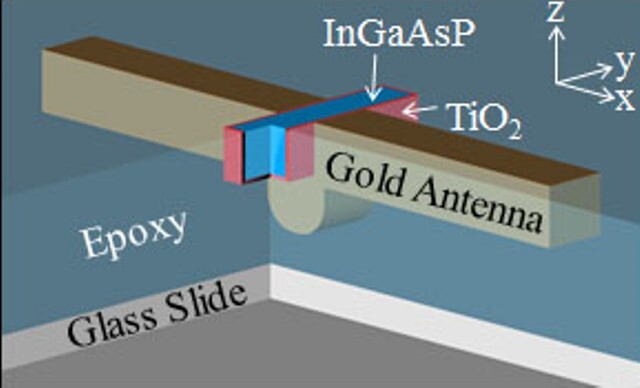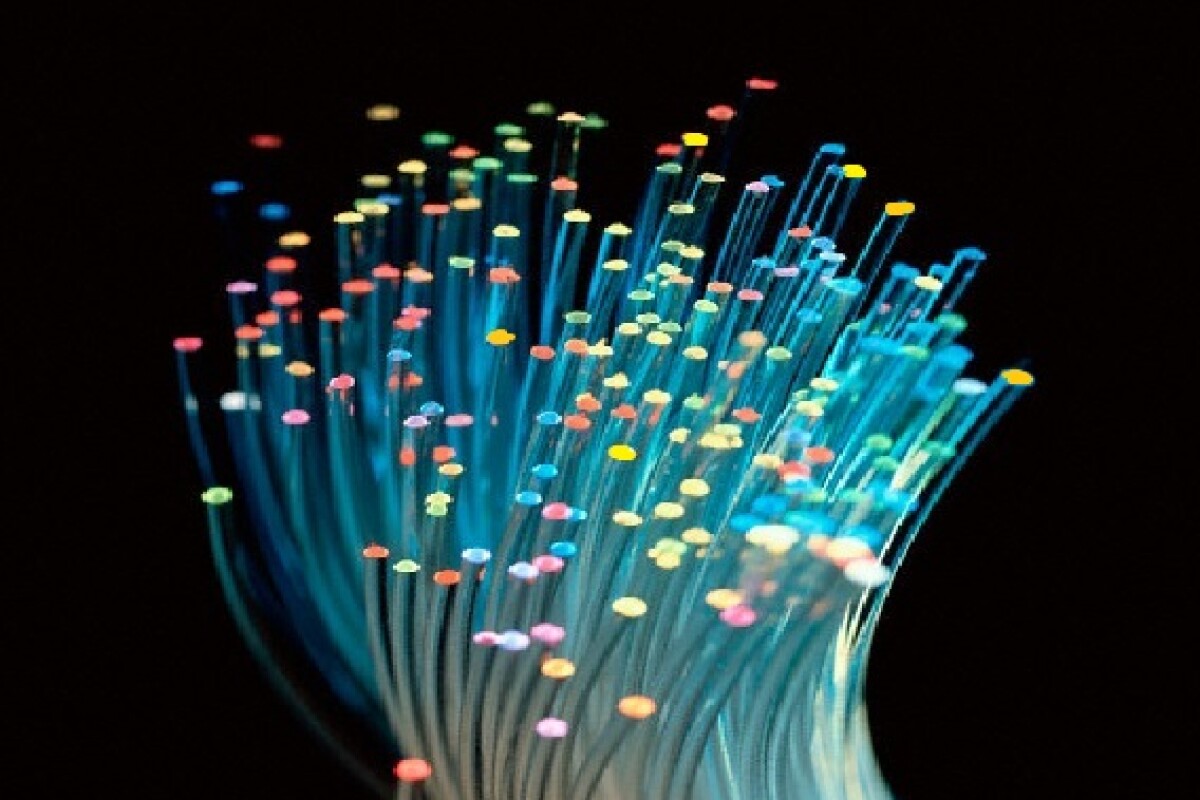By applying 120 year old radio frequency antenna theory to the much newer field of photonics, researchers at Lawrence Berkeley National Laboratory claim to have produced a prototype optical antenna that increases the intensity of emission from a nanorod light source by more than 115 times. This technique may offer the opportunity to replace power-hungry lasers in short-range optical communications devices with enhanced low-power LEDs.
Over short distances – say in optical links or in future light-coupled computer chips – lasers are largely unsuitable due to their cost and power consumption. Ideally, LEDs would be used in these applications, but until now spontaneous emission rates from LEDs were incapable of achieving the requisite light power levels.
"Since the invention of the laser, spontaneous light emission has been looked down upon in favor of stimulated light emission [lasers]," said Professor Eli Yablonovitch, a physicist and electrical engineer with Berkeley Lab’s Materials Sciences Division. "However, with the proper optical antenna, spontaneous emission can actually be faster than stimulated emission."
Spontaneous emission – as found in LEDs – is produced by exciting an electron from a lower to higher energy level and, when the electron returns to the lower energy level, it spontaneously emits a photon. But, because there is no way to control or maintain the return of the electron to the lower energy level, the light emitted by such a source is randomly emitted in varying amounts and in haphazard directions.
In stimulated emission, on the other hand, applying an electromagnetic field at the frequency of the transition state (that is, the point when the electron transitions energy levels) produces a dipole field that oscillates at a specific frequency. This field then prompts the electron to change energy states and release a photon in a controlled way.

The Berkeley device consists of a light-emitting source that sits at the center of a microminiature physical dipole antenna. The device effectively emulates the previously mentioned dipole action by electromagnetically stimulating the dipole antenna to create an external amplifying field.
"Spontaneous emission from molecular-sized radiators is slowed by many orders of magnitude because molecules are too small to act as their own antennas," said Professor Yablonovitch. "The key to speeding up these spontaneous emissions is to couple the radiating molecule to a half-wavelength antenna. Even though we’ve had antennas in radio for 120 years, somehow we’ve overlooked antennas in optics. Sometimes the great discoveries are looking right at us and waiting."
Specifically, the optical antenna created by the Berkeley team is made from gold and used in an arch antenna configuration (where the dipole arms of the antenna arch under the center), with a nanorod of Indium Gallium Arsenide Phosphide (InGaAsP) located in the center acting as a spontaneous light emitter. The InGaAsP was also coated with a layer of titanium dioxide to provide electrical isolation.
Using this configuration, the team was able to effectively boost the spontaneous light emission of the nanorod by approximately 115 times. A 200-fold increase in emission levels is considered the speed difference separating stimulated and spontaneous emissions. As such, if a 200-fold increase is reached, dipole-boosted spontaneous emission rates will pass those of stimulated emissions and equal or better laser light emission capabilities.
"With optical antennas, we believe that spontaneous emission rate enhancements of better than 2,500 times are possible while still maintaining light emission efficiency greater than 50-percent," said Professor Yablonovitch. "Replacing wires on microchips with antenna-enhanced LEDs would allow for faster interconnectivity and greater computational power."
In addition to future microchip applications and short-range optical communications, the team believes that optical antenna-boosted LEDs could also find use in photodetectors, imaging, bio-sensing, and light-based data storage applications.
The results of the team's study were published in the journal Proceedings of the National Academy of Sciences.
Source: Berkeley Lab






![The Ti EDC [everyday carry] Wrench is currently on Kickstarter](https://assets.newatlas.com/dims4/default/0ba225b/2147483647/strip/true/crop/4240x2827+0+3/resize/720x480!/quality/90/?url=http%3A%2F%2Fnewatlas-brightspot.s3.amazonaws.com%2F59%2Fb2%2F6a6fdd0348a8bfdad88bbcefec53%2Fdsc03572.jpeg)